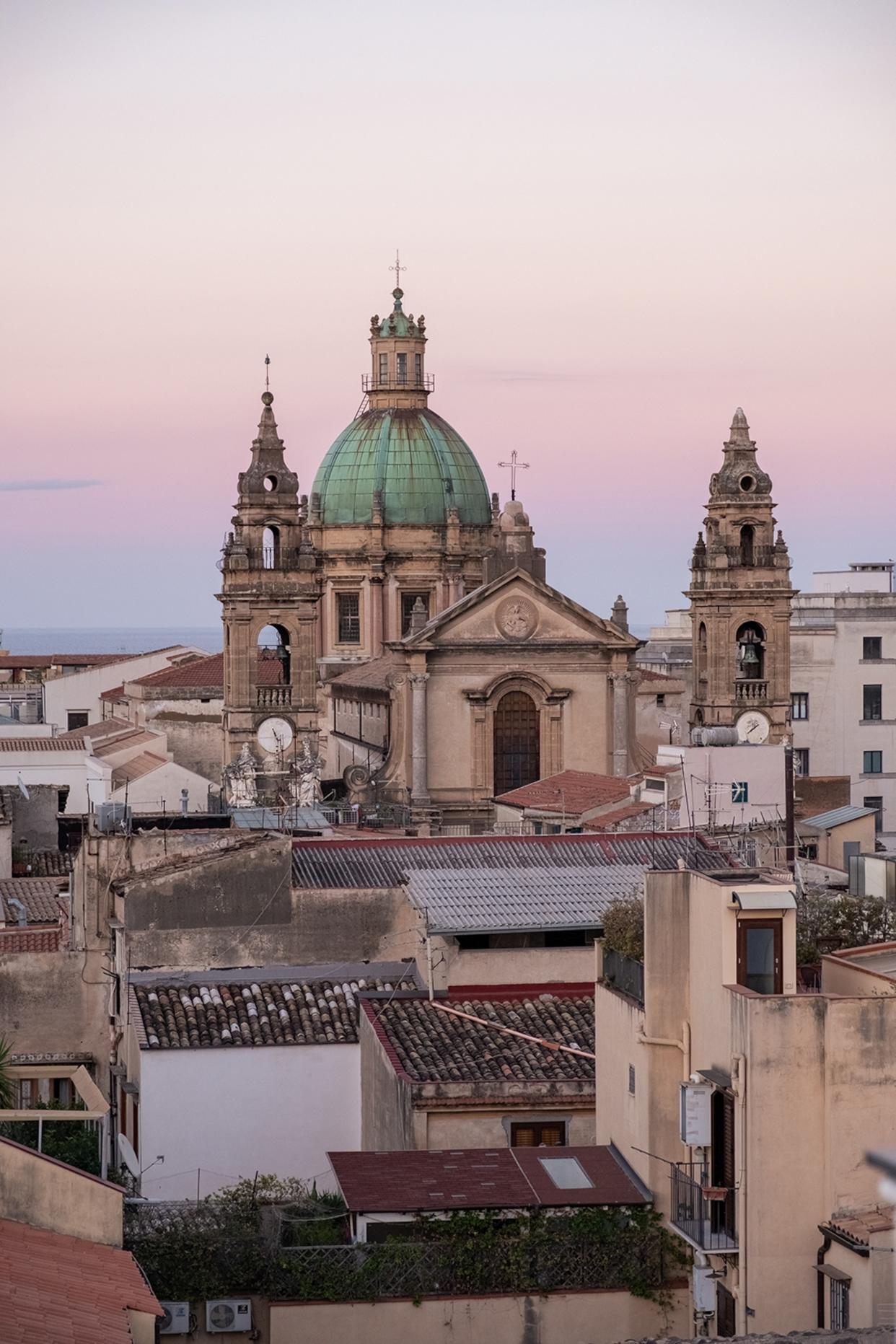
This article was produced by National Geographic Traveller (UK).
It’s Friday evening and the midsummer heat is at last beginning to fade. On central Via Maqueda, amid Baroque churches and dilapidated palazzi (grand buildings), everyone is outside. Pensioners, parents, teenagers and toddlers are all here on this long, pedestrianised street — and no-one is going anywhere in a hurry. Not even the bride who saunters through the crowd in a spray of sequins and white lace. Judging by the scowl on her maid of honour’s face, she’s late. But she doesn’t seem to care. Clearly, all that matters is that everybody sees her. Right here, right now — in a street thronging with her fellow Palermitans.
Welcome to the city’s passeggiata, the Italian ritual of dressing up, going for a walk and checking everyone out. The wonder of the tradition in the Sicilian capital is not so much that it’s so busy, but that it’s happening at all. Only 25 years ago, Palermo’s historic core was largely shuttered after dark. The 2001 edition of the Rough Guide to Italy was baffled by the silence. ‘The strangest thing about Palermo’s fast lifestyle is that it virtually stops at around 8pm,’ it notes.
Not anymore.“It was the Erasmus Programme that began the change,” says Marco Romeo, of Streaty food tours, when I meet him for a beer in nearby Piazza Sant’Onofrio. He’s been leading street food and restaurant tours through his hometown since 2013, and he remembers well the days when Via Maqueda was shuttered at night. Petty crime was rife in this district controlled by the mafia. Until, bit by bit, a new wave of visiting university students from across the European Union began to change the tone. “They wanted to go out at night like they did back home,” he says. “So bars began to open up to cater to them.”
The turning point came 10 years ago, when the city’s anti-Mafia mayor, Leoluca Orlando, was in office. He prioritised cleaning up the city, as well as pushing for UNESCO recognition of Palermo’s palaces and churches, several of which fuse both Christian and Islamic traditions of art. One of the prerequisites for World Heritage status is good pedestrian access — so his administration closed two of the city’s key inner-city streets to traffic.
One was Via Maqueda, the other Via Vittorio Emanuele, an ancient axis connecting the harbour with the monumental Porta Nuova gate. Because they’re so straight, both are natural promenades, and soon life was flooding along them, petty crime having been elbowed off by the buzzing crowds. With it came a kaleidoscope of brightly lit pizzerias, cafes and bars, turning the traditional passeggiata into the natural overture to a big night out.




To join in, you only need wander these thoroughfares — as I do after my chat with Marco. I start with a glass of Carricante, a mineral white wine from Mount Etna, at Dal Barone on Via Alessandro Paternostro, just off Via Vittorio Emanuele. It’s a pocket-sized organic wine bar, and most of the customers are spilling onto the pavement. To my right, the street curves in a cacophony of chatter and cocktails.
Last autumn, the Palermitan passeggiata scene had a sudden growth spurt out towards La Cala, the oldest part of its harbour. Here, the sleek, new Palermo Marina Yachting development has flat-topped, glass-walled restaurants. Some say it belongs in Dubai, but that hasn’t stopped the crowds from heading here after dark. I grab a late-night pistacchio gelato and join the masses of Palermitans outside, agog at the light show that washes colour into the marina’s surging fountains.
On my way back to Palermo’s historic centre, I cross busy Via Cala and stumble across something rawer and less varnished at Via Chiavetteri. Choked with restaurant tables, it echoes with the voice of a singer performing at Honey Rum bar. She’s giving a full-throated rendition of Italy’s 2023 Eurovision entry, Due Vite (‘Two Lives’). Many in the audience know the words by heart. The energy of this resurgent city is palpable, and so the night goes on.
How to do it:
Real Holidays has a three-night, tailor-made break in Palermo from £850 per person, B&B, including flights and a street food tour. Alternatively, stay at Palazzo Natoli, just off Via Vittorio Emanuele, from €143 (£122), B&B. Streaty’s tours from €64 (£55) per person.
This story was created with the support of Real Holidays and Palazzo Natoli.
Published in the October 2024 issue of National Geographic Traveller (UK).
To subscribe to National Geographic Traveller (UK) magazine click here. (Available in select countries only).







